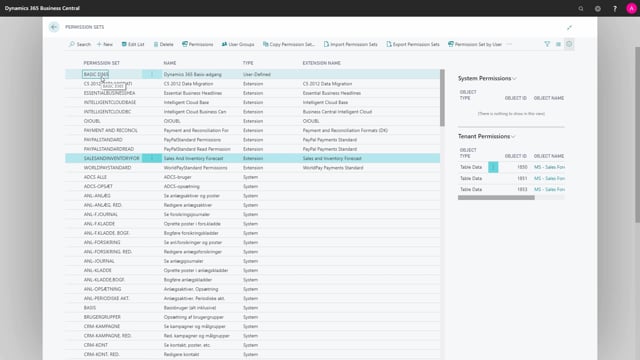
How to manage Permission Sets in Business Central?
In this video, I will go through how you manage the permission sets in Business Central. So first I have to find the permission sets.
This is what happens in the video
And the permission sets are actually the core permissions in Business Central.
So every user in Business Central needs to have a minimum of permission sets to work in the database.
So this is a permission set list and you can see we have permission sets that could be user-defined, extensions, it can be system. And the only thing you can make corrections into is if they are user defined, so let’s go into a user-defined permission set and look into it and I can press the permissions.
So in here, a permission sets is a list of table data that you as a user have access to and you can see in the first column it is table data and I have the table ID and I have the table name, and then I have some different permissions. I have a read permission, insert, modify, delete, and execute.
So these are the permissions that I can work with in the table data. So if I have an entry permission, that means that I can insert new entries in that table and modify, I can modify existing entries in the table, and delete that means I’m allowed to delete whatever that might be of entries.
And in fact, permissions are only built up with the data because the data are the things that are important in Business Central.
Down here, I have a table, report, code unit, XML report, and so on, and they all have object ID 0 that means I have access to all reports and all tables and all the stuff like that. And that’s not important because the data are stored in the table data.
The table data is the one that tells you what you actually can see. So if you have access to all reports, but you have no data that you can see in the reports, they are not for any use anyway.
So you can just add new tables in here and you can just delete tables and you can set permissions to whatever you like. If the permission is indirect, that means that you as an end-user not have direct access to that table, but you have access via another table that you have access to.
So indirect is a table that have access to this table that you have access to from your permissions somewhere else.

